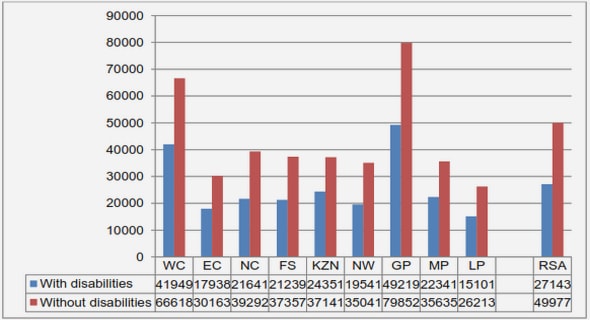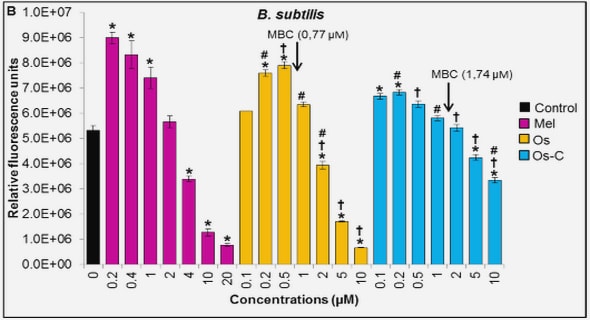Get Complete Project Material File(s) Now! »
The three-phase model of the interstellar medium
Following the classical theory of the interstellar medium (McKee and Ostriker 1977; Cox 2005; Tielens 2010), we can assume it to be divided into three phases: the cold neutral medium (CNM), the warm neutral/ionised medium (WNM/WIM) and the hot ionised medium (HIM).
In the 1970s, for the first time, McKee and Ostriker (1977) showed how starting from a two phase primitive galaxy, the system can evolve to the present three-phase medium. They supposed that the initial system was mainly composed by cold neutral clouds and an intercloud phase (WNM and WIM, which represent the most extended phase). The explosion of a massive (M & 8M ) star (supernova, SN) releases a large amount of energy (ESN) and matter (1 5M ) and generates turbulence in the ISM. As a consequence, the shocked gas will be ionised and its temperature will rise to THIM & 106 K. At these temperatures, the radiative cooling timescale is long ( th & 108 yr, see Section 5.B) and therefore this gas will coexist with the two other phases.
Once the pressure equilibrium between the different phases is reached, the volume occupied by the hot gas at the galactic scale is related to the volume, VSNR, and cooling timescale, SNR, of the single supernova remnants. These two latter quantities can be express as (Tielens 2010):
where n0 is the density of the medium where the SN expands. For a typical SN, the energy released is ESN 1051 erg (e.g. McKee 1989). Furthermore, since the filling factor of the CNM is low ( 1 5% ), we can assume that a shock wave mainly expands result VSNR 4:7 10 kpc (i.e. a sphere of radius 100 pc) and SNR 2:4 10 yr.
Given the rather large volume of the ISM affected by a SNR and its long timescale, we can therefore imagine that, a series of several supernovae in a galaxy may create interconnections between the shocked regions. We can define a porosity parameter, Q, as (Cox and Smith 1974) :
Thus, for the estimated porosity parameter, the HIM filling factor results fHIM = 0:42. This means that, if we assume randomly distributed supernovae, there is a probability of 42% that a supernova explodes in a hot cavity. Furthermore, if we take into account that the supernova will expand for 100 pc, then the probability that there will be an overlap between the hot cavities generated by the newly exploded and past supernovae is very high (p = 1 exp( 8Q) ’ 0:99, Tielens 2010; Quintanilla and Torquato 1996).
This is a runaway process: because of the large overlap between the hot cavities, the pre-shock density of the gas swept up by a SN will be increasingly lower and the SN will expand further, reaching a larger filling factor. However, despite numerous theoretical studies since the first works, the HIM filling factor is still highly uncertain .
This is the classical three-phase model of the ISM. Supernova explosions regulate the filling factor of the three phases and asymptotically they will coexist in pressure equilibrium. However, in the ISM there is a continuous transition between the different phases and as we will see in the next section, these transition regions are of particular interest and contribute to the global picture that we have of the Galaxy.
The lifecycle of dust
Table 1.1: Parameters of the different phases of the interstellar medium. f is the filling factor, Tgas and nH are the gas temperature and density respectively.
Dust formation
Dust is believed to be formed mainly in the external layers of evolved metal-rich stars. From their formation, stars burn huge quantities of hydrogen in their core leading to the exhaustion of their supply of hydrogen in the late stages of their lives. For a low- to intermediate-mass star (0:6 10 M ), this process leads to an increase in the temperature and density in the core, while the outer layers expand and cool. At a sufficiently high core temperature ( 3 108 K) the fusion of helium nuclei begins. The cooling of the star halts and its luminosity increases again leading to a phase known as the early asymptotic giant branch (E-AGB). When the star has burned all the helium supply, a phase of thermal pulsations begins (TP-AGB). At the early stages of this phase, the star derives its energy from a very thin layer of hydrogen. As the hydrogen burns, more and more helium is produced leading to an explosive reaction known as a helium shell flash. The increase in temperature and luminosity then leads to a sufficiently high energy to ignite hydrogen burning, leading the cycle to start again. Because of these thermal pulsations the star expels large amount of material that forms the circumstellar envelope. This is the place where most of the cosmic dust is formed and finally released into the ISM with a timescale of 3 109 yr (Dwek and Scalo 1980; Gehrz 1989; Jones and Tielens 1994). In particular, carbon-rich and oxygen-rich stars are believed to mainly form carbonaceous and silicate grains, respectively.
Furthermore, analyses of presolar grains within primitive meteorites seem to indi-cate evidence for SiC and graphite grains formed in Type II SNe (e.g. Hoppe et al. 2009, 2010; Lodders 2006). However, whether this mechanism is able to efficiently form large amount of dust is a debated topic. For example, observations of type II SNe such as Cas A or Supernova 1987A reveal the presence of newly formed dust ( 0:1M for CasA, Arendt et al. 2014, 0:4 0:7M for Supernova 1987A, Matsuura et al. 2011). However, these SNe have not yet reached the phase where the reverse-shock would destroy part of the observed dust. If a significant amount of dust were formed in SN ejecta, this could considerably reduce the dust injection timescale but as yet the evidence is inconclusive.
Once ejected into the ISM by stellar winds (or shocks), and depending on the environment, dust undergoes different processes leading to an evolution of its physical properties, size distribution and chemical composition.
Dust destruction
As mentioned in the previous section, supernova remnants cool down with a very long timescale ( SNR 108 yr) therefore leading to a large HIM filling factor (fHIM 0:3 0:7). This medium is highly ionised and because of its high gas temperature T g 106 107 K) ions and electrons are in thermal motion at high velocities (v e 5 ( 3 1 4 10 3 1 10 10 km s and vp 1 km s for electrons and protons, respectively). This represents a harsh environment for the dust. Fast ions and electrons, interacting with dust grains (Section 3.2 and 3.3) are able to efficiently erode them (Draine and Salpeter 1979a; Jones 2004; Micelotta et al. 2010b; Bocchio et al. 2012). This process, known as sputtering, leads to the complete destruction of grains on rather short timescales (tdest 107 yr for a 100 nm carbonaceous grain embedded in the HIM, Bocchio et al. 2012, Chapter 4).
Furthermore, during a supernova explosion, the propagation of shock waves in the ISM, leads to the destruction of large amounts of dust (Chapter 6) on a timescale of the order of 108 109 years (Barlow 1978a,b; Draine and Salpeter 1979a,b; Dwek and Scalo 1980; Seab and Shull 1983; McKee et al. 1987; Jones et al. 1994, 1996). In the framework of the three-phase model, the dust destruction is estimated to be dominant in the WIM (McKee 1989). In fact, the HIM is too tenuous for the sputtering to be an efficient mechanism while the CNM has a too low filling factor to give a major contribution to the dust destruction. During the coupling to the shocked gas, dust undergoes interactions with ions/atoms and electrons (Section 3.2 and 3.3) and other grains (Section 3.5). This mechanism is the main source of dust destruction in the ISM and will therefore determine its lifetime in the Galaxy. The timescale for the complete destruction of dust due to SNe in the Galaxy was estimated by McKee (1989) as where vs7 is the shock velocity in units of 100 km s 1 and (vs7) is the dust destruction efficiency for a shock of that velocity.
The more recent estimates of dust destruction efficiency were calculated by Jones et al. (1994, 1996) for different shock velocities and taking into account both ion/atom – grain interactions and grain – grain collisions, finding a lifetime of 4 108 yr and 6 108 yr for silicate and carbonaceous grains, respectively. These estimates have now been re-visited by Bocchio et al. (2014) with the use of a new dust model (Jones et al. 2013) and updated dust processing models (Serra Díaz-Cano and Jones 2008; Micelotta et al. 2010a,b; Bocchio et al. 2012, 2013b, see Chapter 6), resulting in even shorter lifetimes for both silicate (tdest 3 108 yr) and carbonaceous grains (tdest 6 107 yr). Thus, the issue of dust lifetime is still a major conundrum (e.g., Jones and Nuth 2011).
Dust in the CNM
As the dust continues its journey, it enters denser regions, the CNM. The CNM appears to contain essentially three types of clouds: the diffuse, translucent and molecular clouds. While the diffuse clouds are rather tenuous (nH 10 100 cm 3) and exposed to starlight, the molecular clouds are much denser (nH > 104 cm 3) and protected from stellar UV radiation. Translucent clouds have properties in between these two extremes and represent a transition between these two phases.
In diffuse clouds, dust is mainly heated by the absorption of UV-visible starlight (Section 3.1). This absorbed light is then re-emitted in the IR-mm, making dust detectable by IR-mm telescopes (Section 2.2). Furthermore, the absorption of UV photons is expected to modify the internal structure of grains (Jones et al. 2014). For example, the absorption of UV photons by carbonaceous grains leads to the destruction of C-C bonds then making the outer layer of these grains aromatic-rich (see Section 3.1).
On the other hand, during the transition between diffuse and molecular clouds, as the gas density increases, the starlight is dimmed and the process of aromatization of the outer layer of carbonaceous grains is quenched and another process, their re-hydrogenation, can be efficient and carbonaceous dust is then expected to be aliphatic-rich (Section 3.1, Jones et al. 2014).
Finally, once the grains are incorporated into molecular clouds, the gas density is high enough to allow for gas phase species (e.g., C, O, N) to accrete onto grain surfaces (Jones 2013; Jones et al. 2013, 2014; Köhler et al. 2014). This process is expected to be efficient in the ISM of the Milky Way but, on the contrary, seems not to be at work in low metallicity galaxies (Rémy-Ruyer et al. 2014). Then, moving to the cold core of molecular clouds, the dust temperature drops (T . 10 K) and molecules hitting the surface grains are expected to form icy mantles (see e.g. Gibb et al. 2004).
Molecular clouds also represent the perfect environment for the formation of stars and are sometimes called “stellar nurseries”. A newly born star is luminous and, because of its energetic radiation, will form a large, low-density and mostly ionised cloud (Hii region). The surrounding molecular cloud is also affected by the strong radiation field, which acts as main source of gas heating (photodissociation region, PDR). Dust grains in PDRs almost immediately release the ice locked in their mantles to the gas phase and the absorption of high energy photons by small grains can lead to their destruction by evaporation (e.g. Pilleri et al. 2013).
Finally, the star follows its standard evolution, dust grains will gather to form planets and the system may look like our Solar System. Finally, low- to intermediate-mass stars, later in their lives will quit the main sequence and will end up in the AGB phase. The life-cycle of dust will then re-start again from the beginning.
Table of contents :
1 A journey through the interstellar medium
1.1 The three-phase model of the interstellar medium
1.2 The lifecycle of dust
1.3 Thesis organization
2 Evidence for Dust in the Universe
2.1 Dust extinction
2.2 Dust emission
2.3 Cosmic abundance of elements
2.4 Dust models
2.5 The Jones et al. (2013) dust model
3 Dust processing in the Universe
3.1 Photon – grain interaction
3.2 Atom / ion – grain interactions
3.3 Electron – grain interactions
3.4 Grain charging
3.5 Grain – grain interactions
4 Dust destruction and heating in a hot gas
4.1 Thermal sputtering
4.2 Dust heating in a hot gas
4.3 Conclusions
4.A Upgrades to DustEM
4.B Collisional cascade model
5 Evidence for collisional heated dust?
5.1 The Eyes Galaxies
5.2 PACS to SPIRE convolution
5.3 Conclusions and perspective
5.A Rigorous error estimation
5.B Hot gas cooling
6 A re-evaluation of dust processing in supernova shock waves
6.1 A supernova explosion: the different stages
6.2 Dust destruction and formation
6.3 The GRASH code
6.4 Results
6.5 Discussion
6.6 Conclusions
6.A Properties of the skewed Maxwellian distribution
7 Ram pressure stripping dynamics
7.1 Introduction
7.2 The mechanism of ram pressure stripping
7.3 Common properties of ram pressure stripped cluster galaxies
7.4 Relevant observations of ram pressure stripped galaxies
7.5 Numerical simulations
7.6 Can molecular gas be formed in the tail?
8 Conclusions and perspectives
8.1 Conclusions
8.2 Perspective
8.3 Papers related to this PhD study


